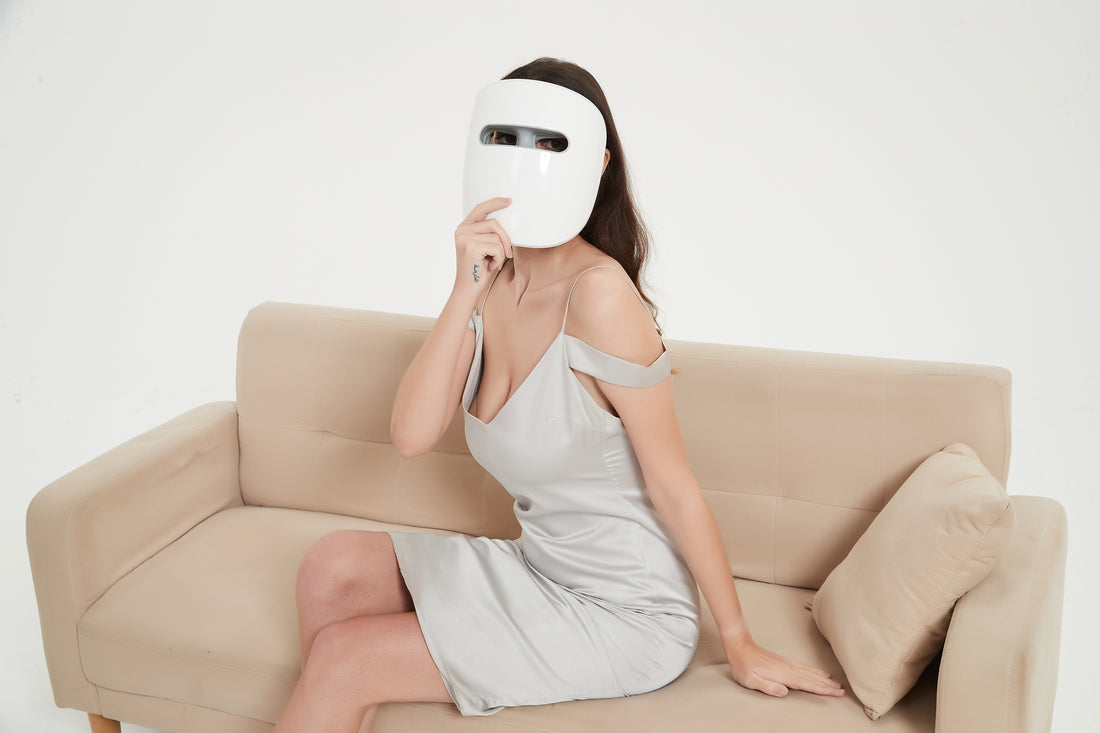
How to choose a high-quality LED therapy product? How to use it?
Share
1 Color purity
The right wavelengths of light are great for our health, but at the same time, certain wavelengths can be harmful to our skin. The color purity of the lamp beads in inferior LED phototherapy products is often insufficient, resulting in emitted light that contains harmful light (such as UV) for the human body. GYH experts believe that the color purity of high-quality home phototherapy equipment should be higher than 98%.
2 Accuracy of light wavelength
The wavelength of light is defined as "the distance between the two successive crests or troughs of the light wave." It is denoted by the Greek letter lambda (λ). Therefore, the distance between the crest or trough of one wave and the crest or trough of the next wave is known as wavelength. Low-level light therapy (LLLT) involves delivering specific wavelengths of light into our skin, which are absorbed by cells, making its effectiveness dependent on the amount of light reaching the target tissue.
Wavelengths are often referred to using their associated colors and typically include purple/blue (400-495 nm), green (495-570 nm), yellow (570-590 nm), orange (590-620 nm), red (620-750 nm), and near-infrared (750-1200 nm) lights. All tissue targets have an optimum wavelength at which they absorb light. Different tissue targets trigger different biological processes. The best device to choose is one emitting evidence-based wavelengths: blue (e.g., 415 nm, 460 nm), red (e.g., 630 nm), and near-infrared (e.g., 830 nm). These wavelengths have been proven to increase ATP production in cells that are compromised due to aging, illness, disease, or just poor lifestyle choices.
We know that light has to be within its precise wavelength range to have the desired effect, and if the deviation is too large, it can even become a different type of light. The wavelength error of inferior phototherapy equipment is even more than 100 nm, which means the light emitted is not very pure and is a mixture of wavelengths. So, while you may achieve some light absorption into the skin, you won't achieve optimal absorption. GYH experts believe that this error value should be controlled within the range of 10 nm.
3 Optical power density
Optical power density can be understood as the energy that light can transmit per unit area, in units of W/m² or mW/cm². Earlier, we mentioned that human cells respond to light with a biphasic effect, which means that neither too low nor too high energies can achieve the expected results. Among clinical studies focused on skin rejuvenation, irradiance values range from 6 mW/cm² to 150 mW/cm². A systematic review of at-home devices used for non-aesthetic purposes (e.g., wound healing, scars, pain, and cognitive function) found that devices finding significant results had irradiances ranging from 8-50 mW/cm².
But in fact, most of the cheap products on the market belong to the category with too low energy (≤ 5 mW/cm²), and the cost of their lamp beads is very low, similar to your common lighting type LED, which is equivalent to a light-emitting toy. Maybe you'd get better results standing under a glowing Christmas tree than using a device like this.
4 Third-party clinical tested
Many brands claim to be clinically proven, but often, they reuse the same clinical data and parameters across their entire product portfolio. However, for their own branded products, no clinical testing has been done, and the clinical data is not made public.
If a brand doesn't provide accessible clinical test results, it's like buying a bespoke fragrance in Grasse, France, and never wearing it. It's suspicious!
Third-party clinical validation, on the one hand, provides an unbiased evaluation of the product and ensures its effectiveness. At the same time, third-party testing prevents low-quality products from entering the market and ensures that products meet industry standards, which is crucial to a brand. Without third-party testing, companies can manufacture and sell products that don't work as advertised. This could be due to the company just trying to make quick money and using cheaper components.
GYH experts recommend choosing products that have undergone third-party clinical testing.
Why choose GYH Cloud-Series LED light therapy mask:
1. GYH's product parameter design is completely based on scientific research and clinical trials. Cloud-Series uses the only light that has been proven effective by the scientific community: red light: 630nm, near-infrared light: 820nm, and blue light: 465nm, the light purity is as high as 98%, and the light wavelength error is less than 5nm. Most importantly, the irradiance of most household phototherapy products on the market is too low, while the optical power density of Cloud-Series is as high as 30mW/c㎡, which is the most effective energy within the safe range.
2. The product has passed the rigorous clinical test of the Korea Institute of Dermatological Sciences (21 subjects, 56 days of test duration), and it has obvious effects on skin moisture status/soothing effect/firmness/elasticity/roughness/gloss improvement. Testers' satisfaction is as high as 96%.

3. The problem with most household phototherapy mask products is that they are uncomfortable to wear, and there are many cables, which is very inconvenient. Cloud-Series creatively adopts a completely cable-free design, which is very convenient. It only needs to be charged once in three hours, and it can be used for a week. In addition, we have designed forehead support, chin support, and soft silicone eye pads to reduce the pressure on the face and make it more comfortable to wear. At the same time, this design also keeps the mask away from the face, maintaining the best irradiation distance, so that the facial skin can absorb the light more effectively.

Common skin problems and recommended duration, frequency, and effective time are as follows:
1. Reduce wrinkles and promote collagen regeneration:
Use red light and near-infrared light for 10 minutes every day. Significant results can be seen within 8-12 weeks.
2. Eliminate acne, fade acne scars, and prevent acne recurrence:
Use blue light for 10 minutes on the first day, then use a combination of red light and near-infrared light for 10 minutes on the second day, and alternate between the two every day. Significant results can be seen within 2-4 weeks. Blue light can clear acne caused by P. bacterium, but acne caused by other factors may require different treatment methods. If acne does not improve after four weeks, please consult a dermatologist for further treatment. In clinical practice, a small percentage of users, especially those with acne, may experience a phase known as the "purge period" or "initial breakout" when using phototherapy masks. This stage is a reaction that occurs during the skin's adaptation to phototherapy.
When starting to use a phototherapy mask, the light's effect may accelerate acne-causing factors (such as bacteria and sebum) from beneath the skin's surface to the skin's outer layer. This process can lead to a temporary worsening of acne in the short term. As the skin gradually adapts to phototherapy treatment, the condition of acne typically begins to improve. Blue light therapy, in particular, is effective in this regard as it helps reduce the bacteria causing acne in the skin. Each person's skin type and reaction are different, so the duration and severity of the purge period may vary. It is recommended to use it continuously for two weeks and continue to observe the skin's response during this stage.
3. Prevent UV damage to the skin:
Use red light and near-infrared light for 10 minutes before going out and again for 10 minutes after returning home.
4. Improve sleep:
Use red light and near-infrared light for 10 minutes before bedtime. Visible results can be seen within 2-4 weeks.
5. Improve pigmentation:
The green light suppresses the production of excess melanin, preventing melanin from reaching the surface of the skin. It helps break down existing melanin clusters and prevents pigmentation. We recommend using the green light mode for 10 minutes daily for optimal results.
6. Reduce intraocular pressure in glaucoma and alleviate migraines:
Both migraines and glaucoma are neurological disorders that can cause pain in the frontal part of our brain. Photosensitive epilepsy patients often experience migraine symptoms, and compared to lights of other colors, green light emits signals to the brain through the visual cortex with less interference. Therefore, green light has a lesser impact on the exacerbation of photosensitivity in epilepsy patients. Clinical studies suggest that green light produces antinociception by activating glutamatergic neurons in vLGN(Ventral lateral geniculate nucleus).The green light produces a definite arrangement in the autonomic nervous system, thereby affecting the neurovascular system of the eye, thereby reducing intraocular pressure and improving glaucoma. Long-term daily use of green light therapy for 10 minutes can significantly relieve the symptoms of migraines and glaucoma.
7. Improve symptoms of Seasonal Affective Disorder (SAD):
Seasonal Affective Disorder (SAD) is a type of depression that occurs at a specific time of year, usually in the winter when days are shorter. Light therapy, using specific wavelengths of light, can regulate the body's melatonin levels, which affects mood. Increased melatonin during shorter days is linked to depressive symptoms. Medical research suggests that light around 460-480nm wavelengths effectively suppresses melatonin production. Therefore, it's recommended to use a light therapy device set to a blue light mode of 465 nm for 10 minutes daily to improve symptoms of Seasonal Affective Disorder.
In addition to the various uses of our product that have been listed, we encourage you to explore the multifunctionality of light therapy by combining different light therapy modes and durations. By experimenting with various settings, you may discover personalized approaches that better suit your individual needs.
FAQ:
Q: Can long-term LED phototherapy lead to skin photoaging??
A: No, this is a misconception. In fact, skin photoaging is mainly caused by certain bands of ultraviolet light, UV-B (290-320 nm) and UV-A (320-400 nm), which may damage the skin by promoting collagen breakdown, free radical formation, interfering with DNA breakdown and suppressing the immune system. The GYH phototherapy mask has filtered ultraviolet light and other wavelengths of light, leaving 630±5nm red light, 820±5nm near infrared light and 465±5nm blue light. These lights are not only harmless, but also have many benefits, such as improving sleep quality.
Q: Do LED masks work better the longer you use them
A: LED phototherapy belongs to the category of low-level light therapy, with biphasic dose effect. It is found in clinical treatment that the best effect is only under optimal conditions, and too high or too low light parameters will reduce the effect. The parameters mainly include wavelength, irradiance and flux. GYH has an accurate grasp of wavelength, irradiance and flux to ensure the safety of parameters. As long as you use it within the recommended time range, there will be no problem.
Q: Why combine red and infrared light therapy?
A: LED red light is highly effective. There is an "optical window" in the skin tissue, and the wavelength of red light and near-infrared light is just within that range, so the light can penetrate the skin tissue to the maximum extent. So the combination of red and infrared light can penetrate deeper into the skin cells for a more dramatic healing effect. For more information, please click on this article:Enhancing the Effects of Phototherapy: Combining Red and Near-Infrared Light Waves
Q: Does the cable-free design with a built-in battery require frequent charging?
A: The product contains a 1000 mAh lithium battery, which can run for 2 hours when fully charged, with an average skin care time of 15 minutes each time, can be used 8-9 times, and can be used for a long time for 60 days when not used at all. .
Q: Can phototherapy masks fully replace other skincare and anti-aging products?
A: No, the right skincare products can actually enhance the effects. Phototherapy mask is a kind of beauty instrument, which can promote cell metabolism and improve the youthful state of skin cells. After phototherapy skin care, more attention should be paid to skin care processes such as hydration. Light therapy also has a biphasic effect, and the right dose can achieve a more ideal effect, so you may not use a light therapy mask every day, but you can continue to use skin care products every day.
Q: Will the light burn the skin?
A: LED cold light uses photochemical action to rebuild collagen, dilute fine lines, improve skin elasticity, promote wound repair, and reduce inflammation. It will not produce high fever, nor will it burn the skin.
Q: Do I have to use skin care products before using a phototherapy mask?
A: You can use skin care products, but it is not necessary. Led lights will directly act on the skin to produce photochemical and photophysical reactions, and do not need other skin care products to produce effects. If you use skincare, make sure it doesn't contain sunscreen as it will block the LED light from entering your skin. If red light and near infrared light make your skin feel tight, you can apply moisturizer before using led face mask.
Q: Can men use it?
A:Yes, of course. The effect of LED mask on male and female skin is the same. And GYH Cloud-S led mask has adjustable strap & chin support, which can fit most face shapes.
Q: How can we improve the areas lacking LED bulbs in the forehead center, the T-zone, and the regions covered by the eye pad and forehead support?
A: The LED light therapy's effect is systemic. Even if some areas like the T-zone and under the eyes do not directly receive light, they still benefit from the treatment due to the proximity of illuminated skin. Therefore, you can expect improvement in these areas as well.
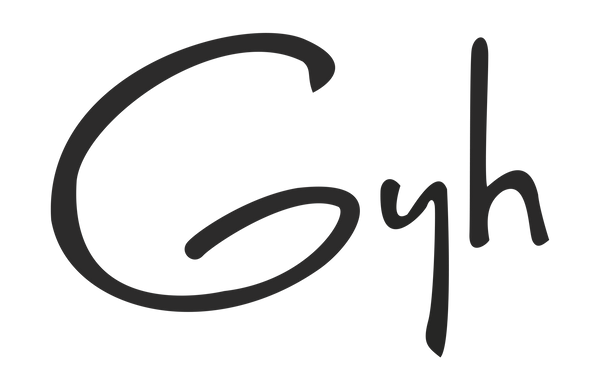
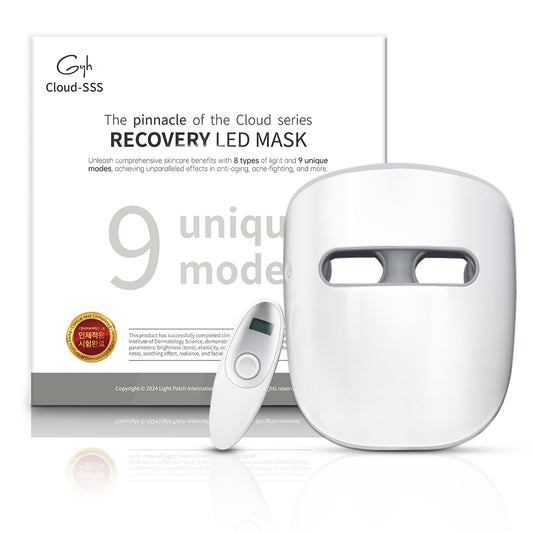
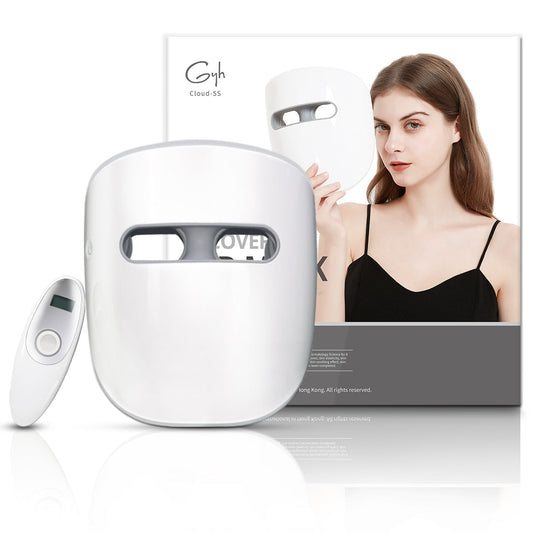
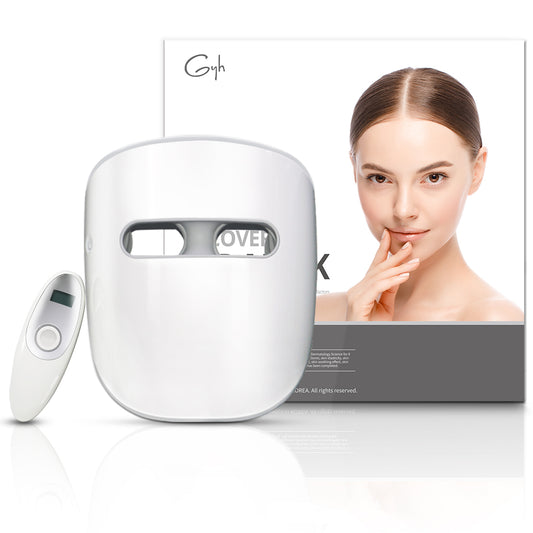
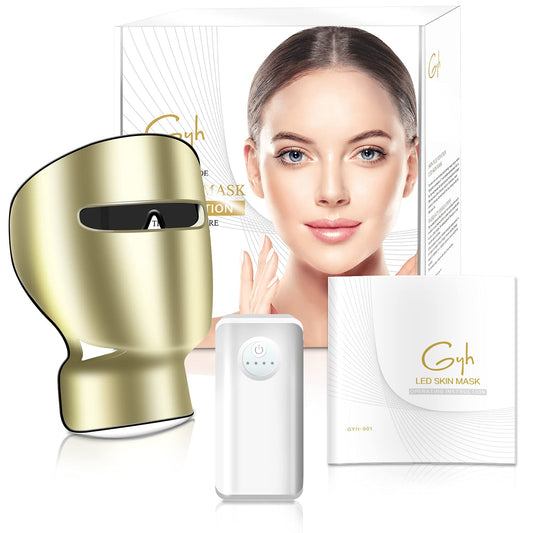
2 comments
Cómo puedo saber qué modelo es mejor para mí?
Super Produkt und sehr guter Kundenservice. Sehr zu empfehlen.